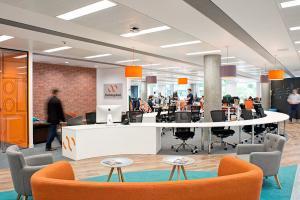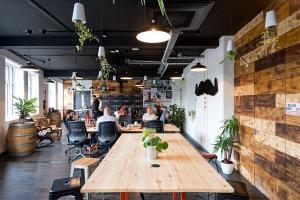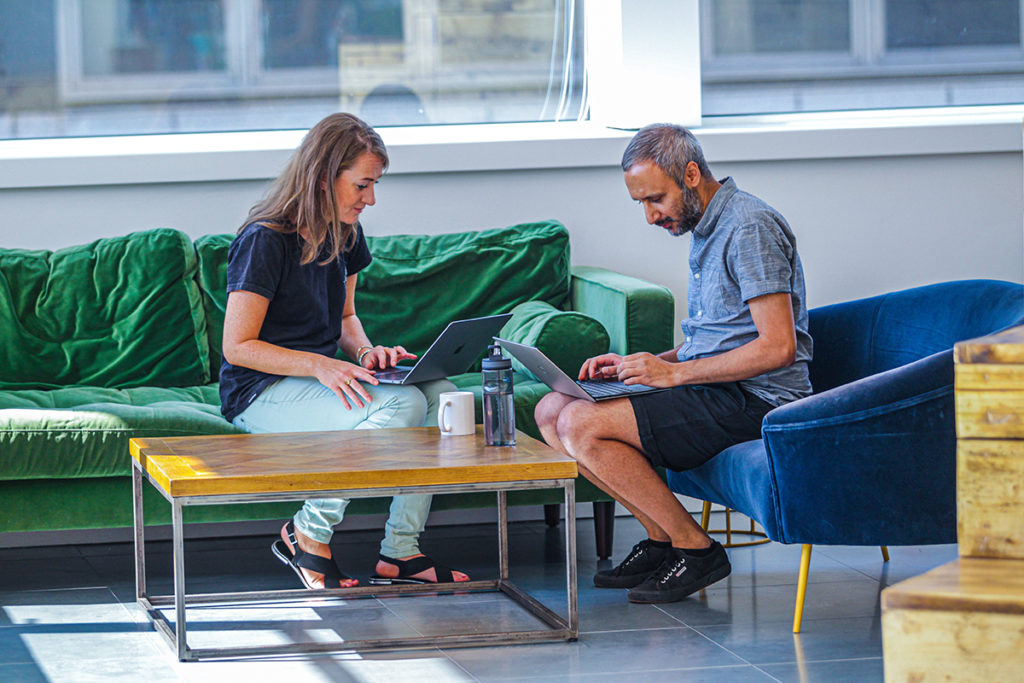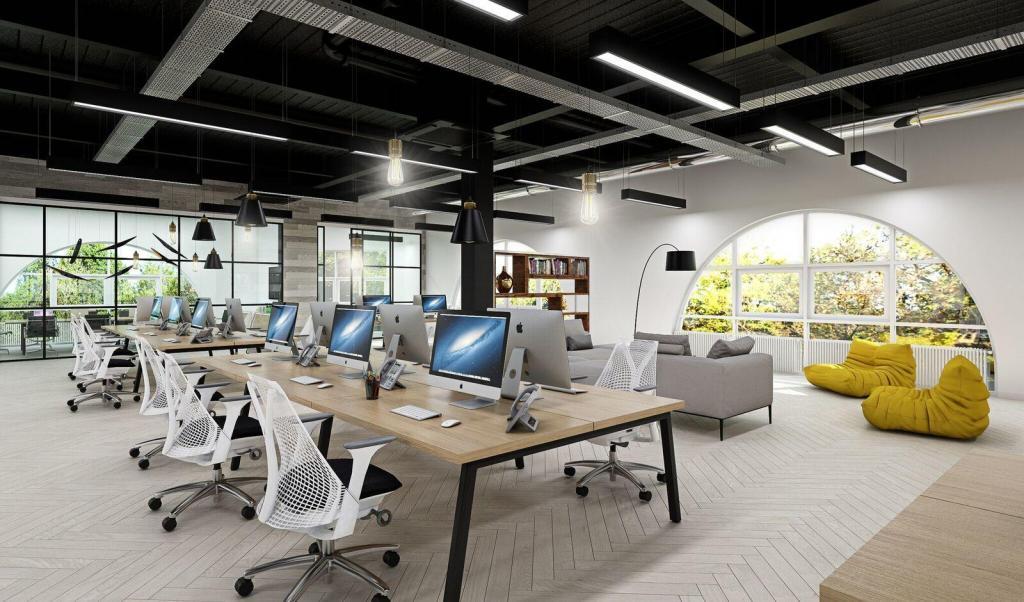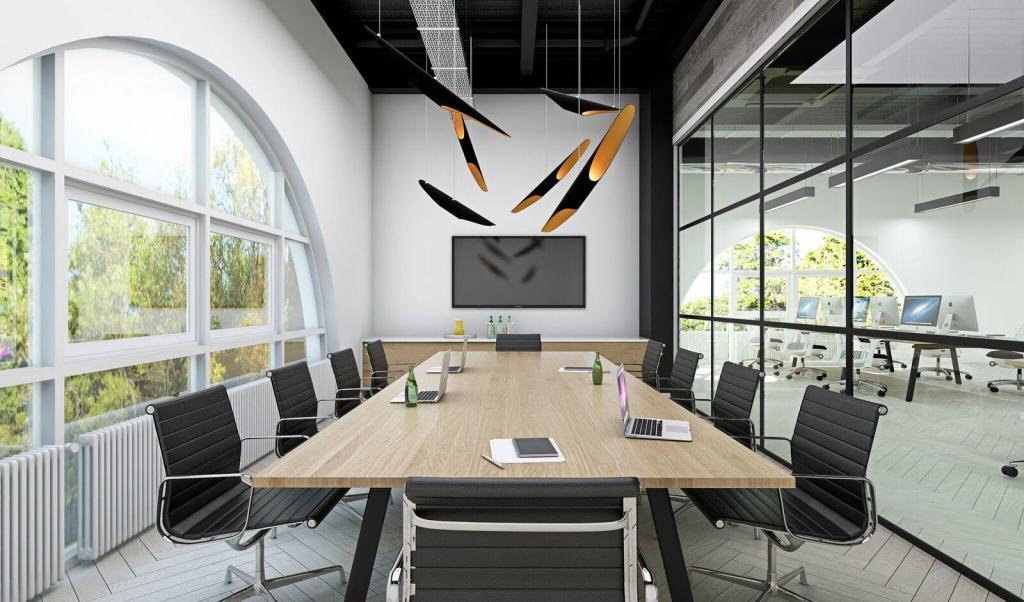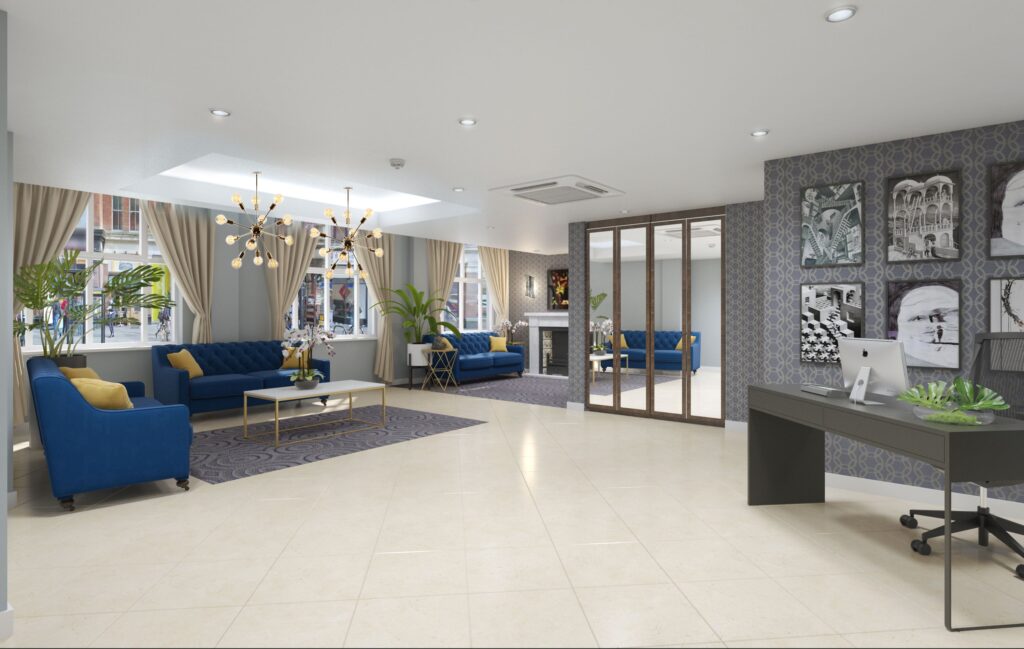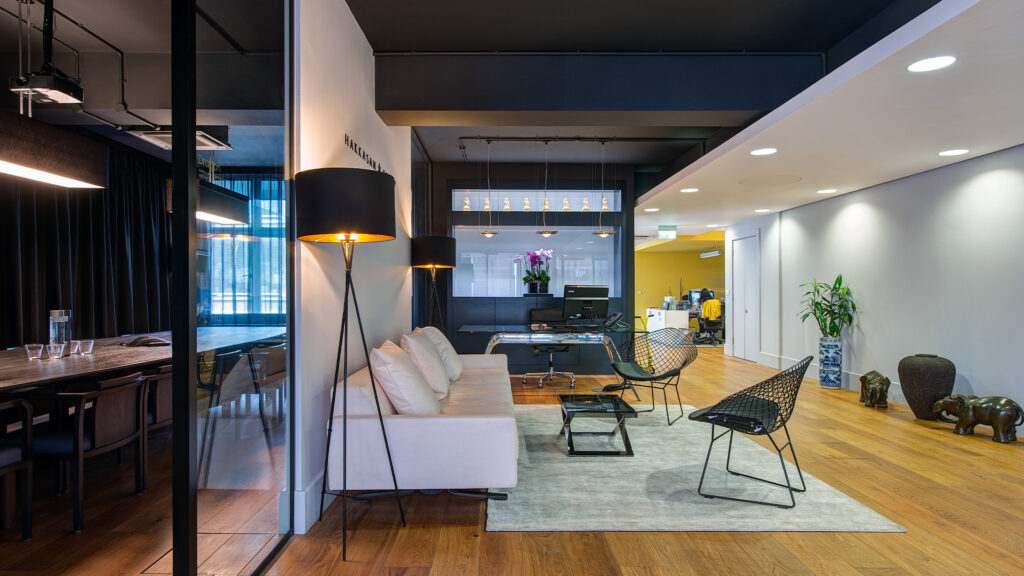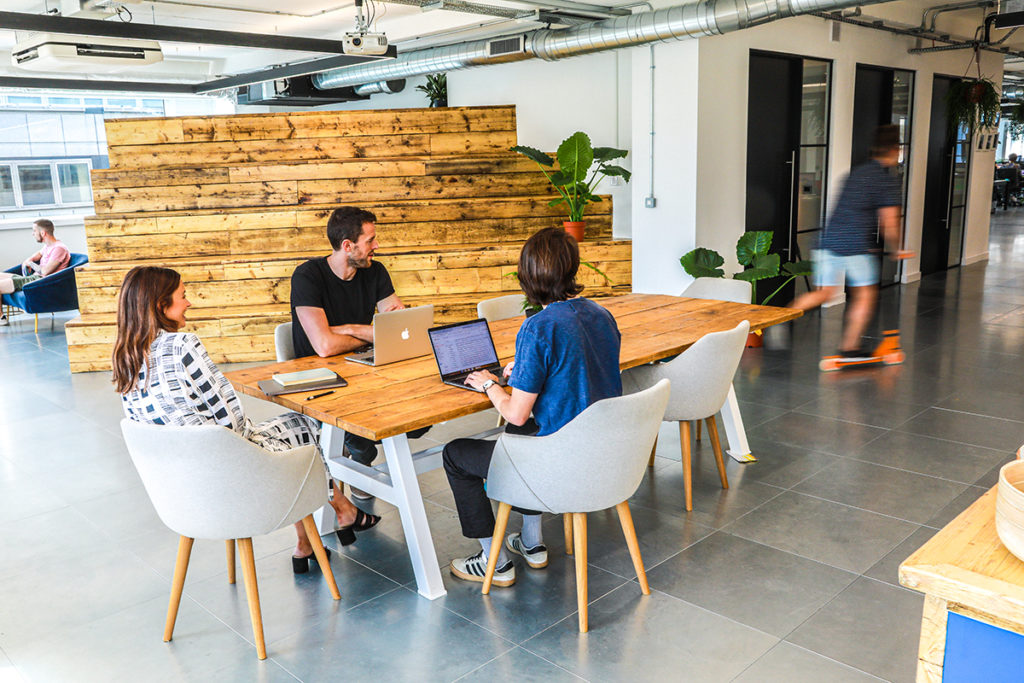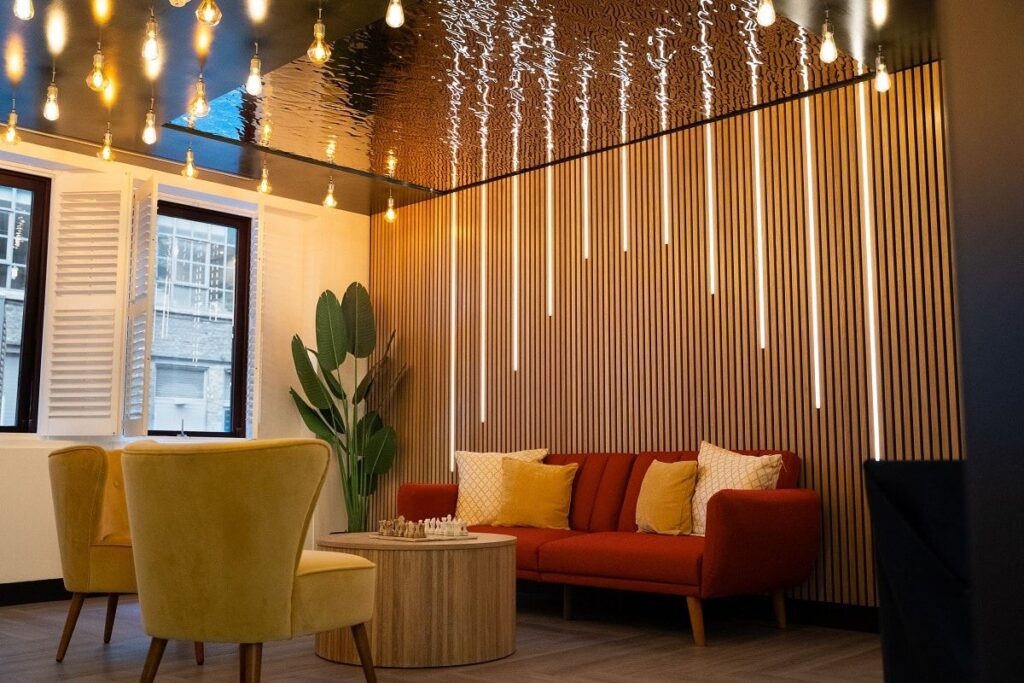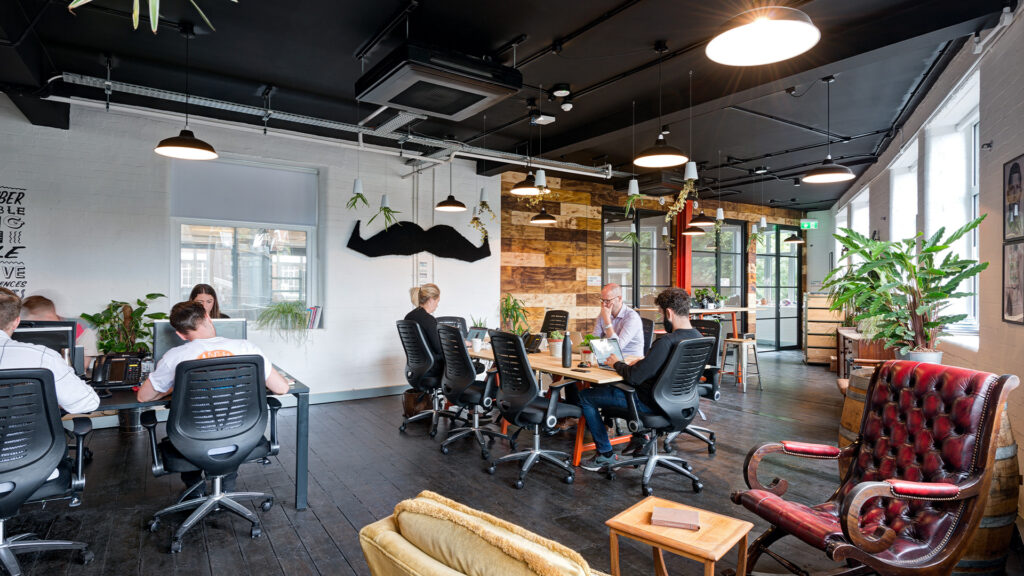Not sure what to include in your office design brief? Perfect – that’s what we’re here for! And it all starts with a bloomin’ good chinwag.
We know, we know. You’ve been given the thrilling / terrifying (delete as appropriate) task of sorting out your office refurbishment. And what you’re really wondering is, how do you explain your ideas to a design company when you haven’t a clue how the process works?
We’re telling you that you don’t need to worry about that.
Before we get into the details of writing an office design brief, we want to explain why we need a brief in the first place.
It’s pretty simple. At least, it is if you’ve ever pushed a trolley round a supermarket.
Eh. What’s a Design Brief Got to Do With Tesco?
Starting an interior fit out project without a design brief is a bit like going to Tesco without a shopping list. Instead of buying meat, milk and vegetables, you stuff your basket with muffins, two packets of BOGOF pretzels and a £35 self-cleaning litter box.
And nothing to cook for tea.
By a cruel twist of irony, you’ve also managed to blow a massive slice of your food budget on a toilet for the cat (cue embarrassed silence). They have ways of making you spend, these supermarkets.
A design brief works much the same way. Unless you have a reasonably good idea of the why, what and when for the project, you might miss some of the things that are important to you, and you could end up blowing cash on stuff that you really didn’t need.
The Nuts and Bolts
Now you know what a design brief is, how do you go about writing one? The good news is, if you scribble some notes in answer to the following questions, your office design brief will be 90% done. (The other 10% will be extracted by force when we come to interrogate meet you….only kidding!)
Who are you and what do you do? Tell us what your company looks like, feels like, tastes like (not literally, we don’t need to lick your CEO). What’s your vibe? Tell us like you just met us at a party, and not at a conference trying to sell us something!
Who’s your customer? Do you help tech startups? Cash-strapped SMEs? Clerkenwell hipsters? What image do you need to portray to them – high-end, approachable, bold?
What are your business goals? Are you growing / downsizing/ rebranding? Are you thinking about introducing hot-desking or changing your way of working? Why are you searching for office design and fit out companies now?
What’s the design direction? Earthy, mellow, rustic? Bright, bold, urban? Smoking jackets and Havana cigars? The more specific you can be the better. Have you got some pictures to show us?
What about the practical stuff? Think about computers, printers, AV equipment, wireless networks, video conferencing facilities, storage, breakout rooms, bathrooms, kitchens and the like. Your colleagues won’t thank you if there’s nowhere to pee.
What makes you gag? Seriously, there’s always something that you really couldn’t stand to see in your design (tartan-themed bathroom suite anyone?) This will tell us what to sidestep and will avoid disappointment.
What’s the budget? If the results don’t left the investment, your FD might pull the plug on the project. A ballpark figure will work at this stage so your designer can make sure that she gives you realistic value without over or under-promising on the design.
Wow, that’s a lot of questions.
It is. That’s why we and every other worth-their-salt design company in London will give you a template brief to fill out. These documents are useful because they trigger all the things you might not have thought of and ultimately save you time and money.
But…..(there’s always a but, right?)
The perfect office design brief is the Goldilocks brief – not too long, not too short, but just right. Problem is, it’s all too easy, for both designers and their clients, to get lost in facts while creating a design brief. When we ask people to write down what they do, they panic and get all ‘spreadsheety’ on us with jargon like “solutions,” or “generate increased ROI.”
Sitting down with you, over a cuppa and a packet of hobnobs, and having a chinwag about where you want to go and what it is you’re dreaming about informs us so much more than any template or form.
Here’s an example conversation that makes us do a happy dance.
Us: “So, Emily, tell us about your dream day.”
You: “Oh, well I get to work and find myself a desk, say ‘hi’ to my colleagues on the way. I hear some people talking about a project I’ve been doing a bit of work on, so I catch up with them about that. But I’ve got to speak to an important client in an hour; I’ve got some prep to do and I’m a bit distracted. So, I grab my laptop and move into a private room. I shut the door and start working.”
We love conversations like this because they give us so much information. In the time it takes to slurp a cup of PG, we’ve learned that you love the idea of open plan working, but worry that you might not be able to concentrate. Already we have the start of a design solution – creating quiet focus rooms within a plug and play office landscape. And we brewed this idea without an Excel spreadsheet in sight. Hurray!
So next time your designer asks you, “What’s the office design brief?” don’t panic. All you need to know is what the dream is. We’ll take it from there.
Feeling inspired?
Click here to book a free consultation our extraordinary designer, Amy. (The hobnobs are on us.)
You can see Amy out plant shopping with one of our clients below – she’s the one in the middle. The bloke on the right is David, the gaffer. He knows a thing or two about translating an office design brief into the perfect workspace too.



